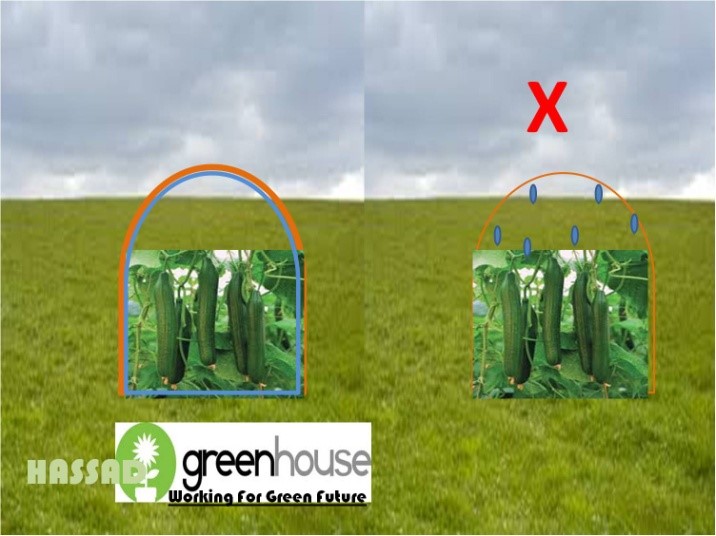Covering agricultural houses (green house)
Technical specifications
Mechanical Strength
The Mechanical Strength of the agricultural film depends on many factors, including those related to the raw materials, the thickness of the agricultural film, the manufacturing method, and its control, including what depends on the installation standards and environmental factors such as light ray intensity, wind, dust, and others.
Our company is committed to using the best raw materials and additives to achieve the mechanical strength of the film and ensure its durability for the purpose set for it.
Thicknesses and assumed film life:
80-120 microns one agricultural season
150 - 180 micron, two agricultural seasons
200 micron three agricultural seasons max 32 months
We can also produce 150 microns with an efficiency of 200 microns, if requested.
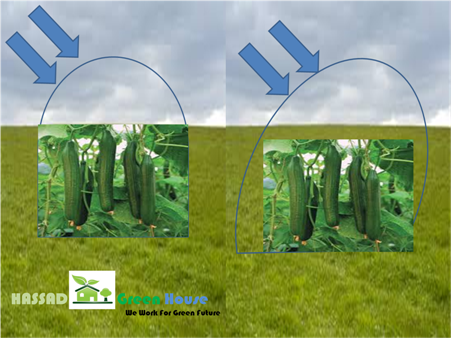
UV Protection
Exposure of plastic materials to ultraviolet radiation leads to the disintegration and decomposition of the polymer particles, as the materials lose their mechanical strength and physical properties, and their particles are exposed to disintegration, and thus the loss and damage of the agricultural product.
The addition of materials that are resistant to solar thermal decomposition and oxidation factors maintains the strength of the bonds in the polymer chain and prevents their disintegration, thus granting the product its durability in proportion to the age of the film according to its specific thickness.
These materials are available in our products in both green and white forms
Either material protects the agricultural house from solar decomposition.
However, if sulfur and halogen are used in high concentrations, it is recommended to use the green color.
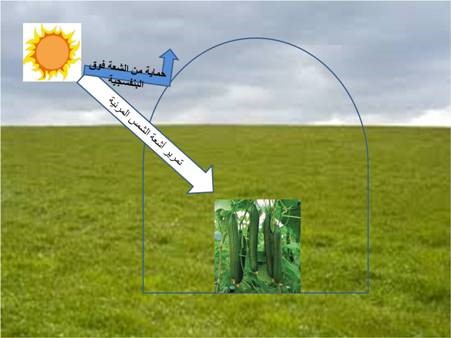
(light diffusion)
Hot and tropical regions are characterized by solar brightness and direct sunlight falling on protected plants, which leads to damage to the tips of plants facing direct sunlight and shading on the lower parts of them.
Therefore, our products contain special additives that disperse the falling sunlight so that the upper parts of the plant are exposed to a quantity of dispersed light and reduce the formation of shadows on the lower parts of the plant. Which leads to homogeneity of growth and increase in yield.
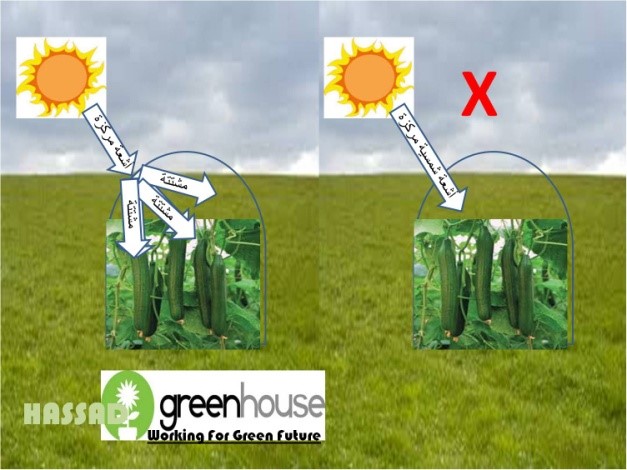
(Thermal effect)
On cold days, plants are exposed to the risk of low temperatures, and they are exposed to the risk of frost at night, which leads to the risk of weakening or stopping growth, and frost leads to the death of the plant.
To overcome this problem, we produce agricultural covers that store heat during the day and slow down the process of its leakage at night.
Ordinary agricultural houses pass infrared rays accompanying the sun's spectrum in both directions, as these rays raise the temperature of the houses during the day and cannot maintain it at night, which leads to the formation of a large temperature difference day and night.
Our additives absorb infrared radiation during the day and slow its leakage at night, so that it retains the internal heat of the agricultural house for the longest possible period and reduces the effect of cold and frost at night.
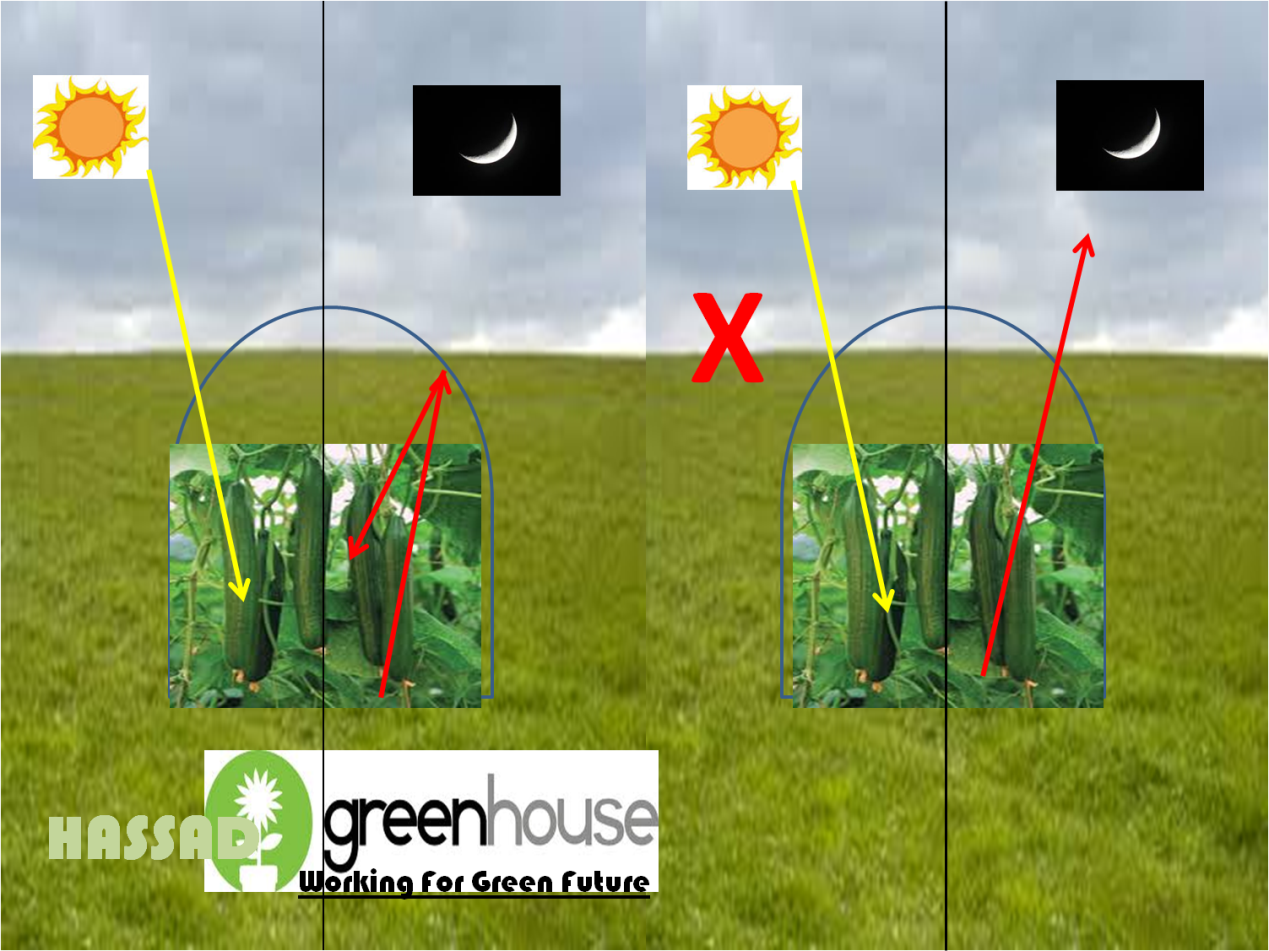
(Effect Anti Drip)
The formation of dew drops at dawn hours on the inner layer of the agricultural house has negative effects on the plants inside the house. As the falling of water droplets on the plant leads to disease in the plant and blocks the sun's rays, and sometimes the water droplets play the role of the lens in focusing the rays on specific points that lead to the formation of spots on the fruits and leaves.
Our company produces special agricultural houses that contain additives that prevent the formation of water droplets on the inside of the agricultural house and turn it into a thin layer of water that flows with the inclination of the house from the inside.
However, despite the presence of these materials and to improve performance, the agricultural house must be ventilated or heated if dew forms. The work of these materials continues for up to two years, according to the percentage of dew formation, as these materials migrate with the thin layer of water.
The addition of these materials may lead to the formation of fog inside the agricultural houses as a result of the state of saturation and the increase in the percentage of moisture in the soil and in the atmosphere. To avoid these cases, our company uses materials that resist the formation of fog (Anti Fog) in areas with high humidity and close to water bodies. It is necessary for the farmer to pay attention to the mechanism of action of these additives and to improve ventilation or heating in days of high humidity.
